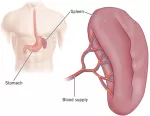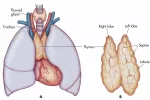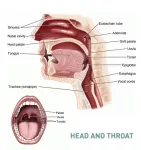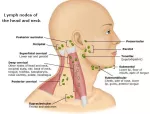
The lingual tonsil is a small mound of lymphatic tissue located at the back of the base of the tongue. Two lingual tonsils are in the mouth, one on each side of the tongue. They are composed of lymphatic tissue that functions to assist the immune system in the production of antibodies in response to invading bacteria or viruses. If the tonsils are repeatedly swollen or infected over an extended period of time, they may need to be removed.
Function of the lingual tonsil
Like other lymphatic tissues, the function of lingual tonsils is to prevent infections. These tonsils contain B and T lymphocytes which get activated when harmful bacteria and viruses come in contact with tonsils. B lymphocytes kill pathogens by producing antibodies against them, while T lymphocytes directly kill them by engulfing them.
Histology of the lingual tonsil
Lingual tonsils are covered externally by stratified squamous nonkeratinized epithelium. The epithelium invaginates inward to form a single crypt. Beneath the epithelium is a layer of lymphoid nodules containing lymphocytes. These tonsils are surrounded by thin capsule of connective tissue which separates them from adjacent structures. Mucous glands located at the root of tongue are drained through several ducts into the crypt of lingual tonsils. Secretions of these mucous glands keep the crypt clean and free of any debris. Therefore, the lingual tonsils are less prone to infection.
Blood supply of the lingual tonsil
Lingual tonsils are located on posterior aspect of tongue which is supplied through:
- Lingual artery, branch of external carotid artery
- Tonsillar branch of facial artery
- Ascending pharyngeal branch of external carotid artery.










